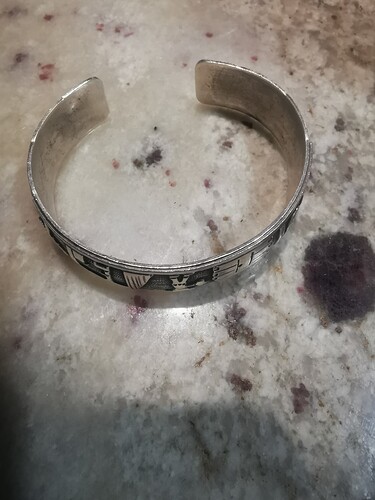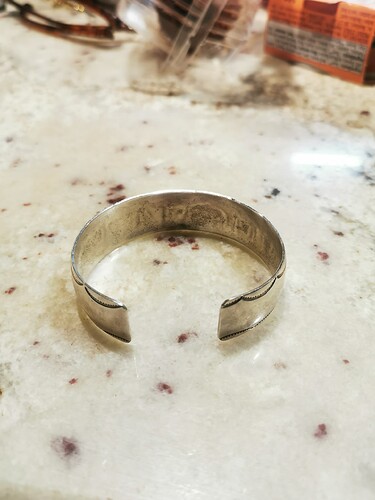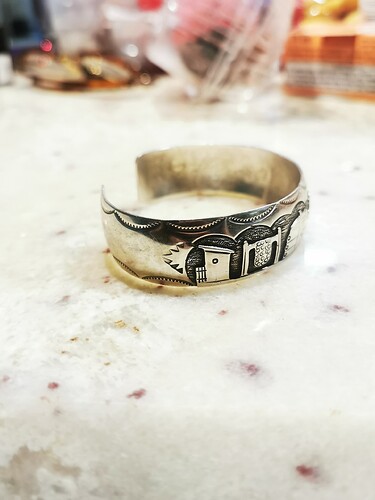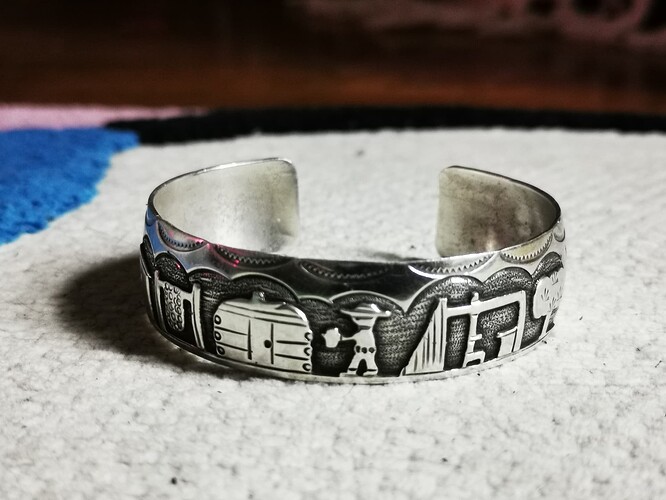That’s called a storyteller bracelet, and is usually Navajo-made. it’s called “overlay” because it is 2 sheets of sterling silver, one is the background that often has a texture to it in the negative spaces, and one is meticulously drawn and cut out to form the images. the “overlay” is then decorated with stamps or chisels, to add detail like the lines that make up the hogan, the scalloped border, or other components of the “story.” it is not uncommon for these to be unsigned.
From left to right, i see what looks to me like a lean-to or livestock shelter, a rack for drying ristras or strands of chiles (or possiby an upright weaving loom?), a hogan (which is a traditional Navajo dwelling), a man in a hat carrying a kettle or pitcher toward the hogan, some sort of contraption he is walking away from (maybe a water well pump?), and then lastly on the right what looks like a fruit tree. after all the decoration is completed, the two sheets are fused together, and then it is shaped into a bracelet. Design elements are usually related to daily life, including sheep, goats, trucks, cactuses, mesas, hogans, weaving looms, and people.
be very careful doing any bending, as this can cause the two layers to separate, or even crack where the silver is thinnest. this is a fairly common form, lots and lots of examples out there. I think they’ve been made since the 70s or so, and still being made today. Hopi also use the overlay technique, but theirs is usually heavier silver in my experience, as well as very crisp and precise, and normally geometric or symbolic in design elements, commonly with a brushed or satin surface. Navajo overlay is often coarser (somewhat less refined and precise), with hand drawn elements like yours.
thank you for sharing, and welcome to the forum!




